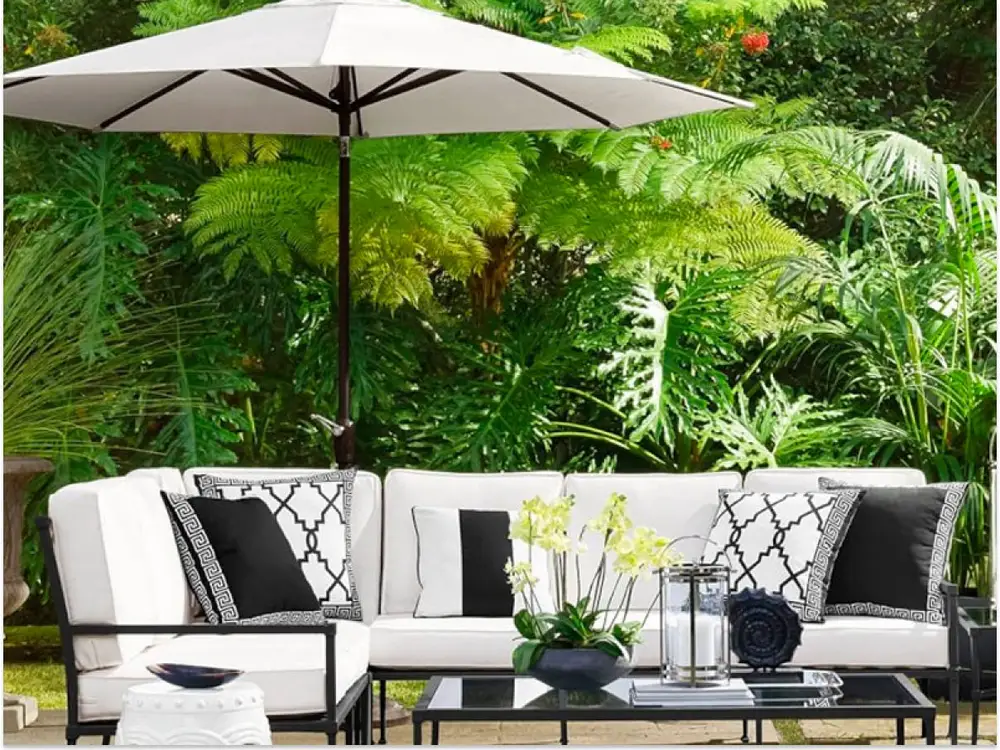Definition of Market Umbrellas and Patio Umbrellas
Market umbrellas and patio umbrellas are two popular types of outdoor umbrellas used for shade in various spaces. The purpose of both types of umbrellas is the same – to provide a comfortable and shaded outdoor setting. The main distinction between the two is their design and construction, which can include differences in size, shape, material, and features. Understanding the difference between market umbrellas and patio umbrellas can assist homeowners and business owners in selecting the perfect umbrella for their outdoor space, depending on the specific needs and conditions.
Purpose of Both Types of Umbrellas
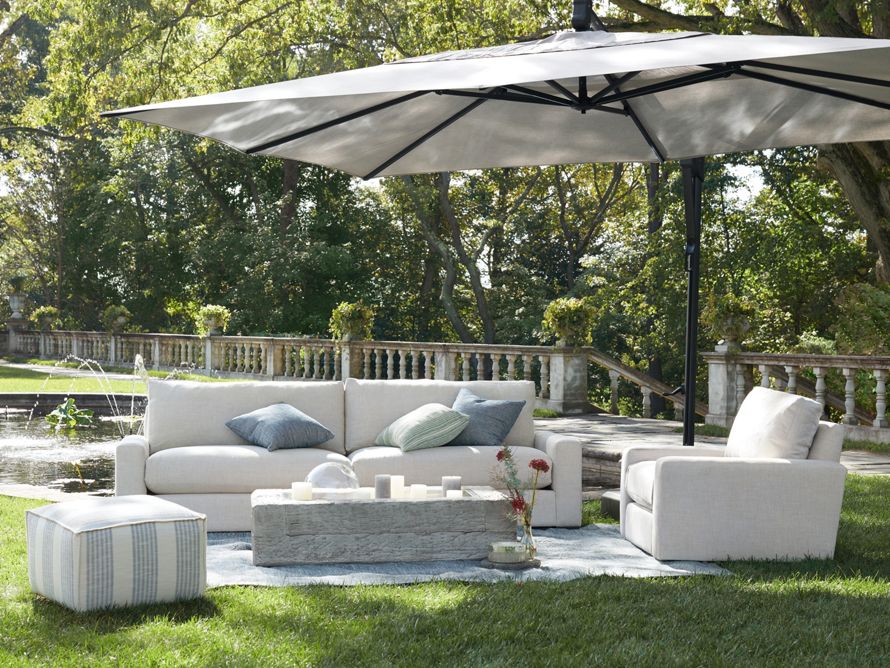
Market umbrellas and patio umbrellas are designed to serve the same purpose – to provide shade and protection from UV rays in outdoor spaces. Whether for residential or commercial use, these umbrellas are perfect for creating an inviting outdoor environment that can be enjoyed by all.
One of the main differences between market umbrellas and patio umbrellas is their placement. Market umbrellas are commonly found in commercial outdoor areas, such as restaurants and cafes, where they are used to provide shade for dining tables. On the other hand, patio umbrellas are typically used for residential outdoor spaces like decks, balconies, and patios.
Both market and patio umbrellas offer protection from harmful UV rays, which is crucial for anyone spending extended periods outside. Additionally, these umbrellas are a great way to add a touch of style and ambiance to outdoor areas. Market umbrellas come in various shapes, colors, and designs, and can be used for promotional purposes or at outdoor events like festivals or exhibitions.
In summary, the purpose of both market umbrellas and patio umbrellas is to provide shade and UV protection in outdoor spaces. While market umbrellas are often used for commercial outdoor dining tables, patio umbrellas are typically used for residential outdoor areas. Regardless of their intended purpose, these types of umbrellas offer a practical and aesthetic solution to make outdoor spaces more comfortable and inviting.
Design Differences between Market and Patio Umbrellas
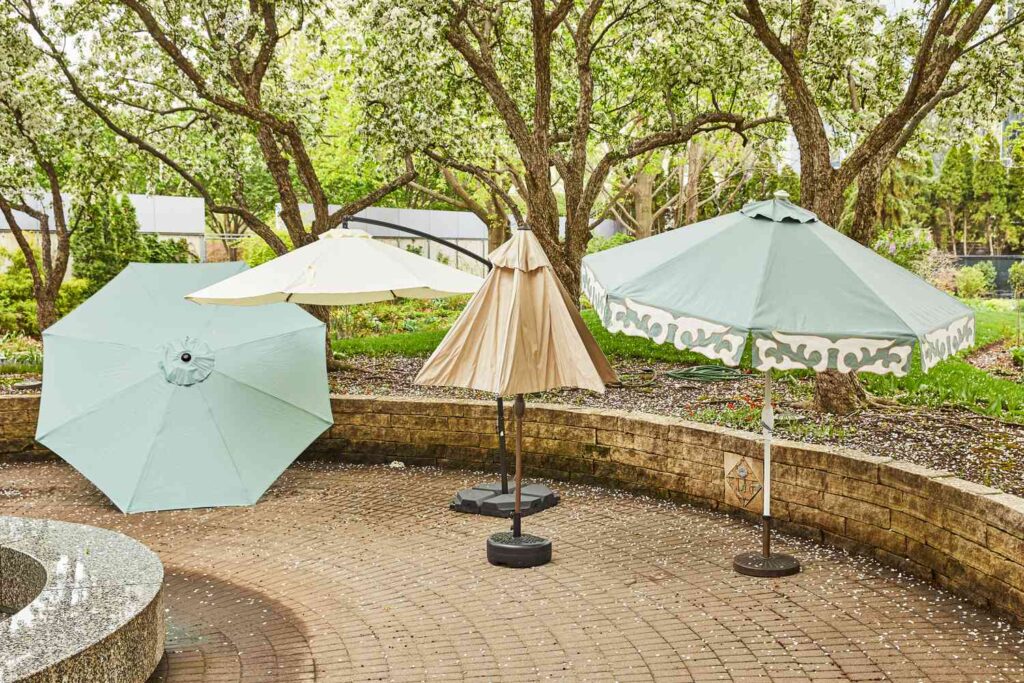
When it comes to designing outdoor umbrellas, there are various factors to consider. Market and patio umbrellas offer different design features to cater to different needs and preferences. In this section, we will explore the design differences between market and patio umbrellas in terms of shape and size considerations, canopy material options, and pole material options. By understanding these differences, you can make an informed decision about which type of umbrella best suits your outdoor space.
Shape and Size Considerations
The shape and size of an outdoor umbrella play an important role in its functionality and aesthetics. Market and patio umbrellas differ in shape and size, each offering unique benefits for outdoor spaces.
When it comes to shape, market umbrellas are typically octagonal in shape, with eight sides providing extended coverage. On the other hand, patio umbrellas come in a variety of shapes, such as square or rectangular, making them an excellent choice for outdoor dining tables.
In terms of size, market umbrellas tend to be larger, typically with a canopy diameter of 9-11 feet. This makes them an excellent choice for larger outdoor areas, providing maximum shade coverage. On the other hand, patio umbrellas are often smaller, ranging from 6-8 feet in diameter, which makes them a perfect fit for more intimate outdoor dining areas.
It is important to consider the shape and size of the umbrella when choosing between a market or patio umbrella. If you have a large outdoor area that needs coverage, a market umbrella might be the better choice due to its larger size. However, if you have an outdoor dining table, a square or rectangular-shaped patio umbrella may be a more appropriate choice as it will cover the table more effectively. Make sure to measure your outdoor space and furniture to ensure the umbrella fits appropriately.
Keywords: Octagonal shape, square umbrella, rectangular shape, canopy diameter, and outdoor dining tables.
Canopy Material Options
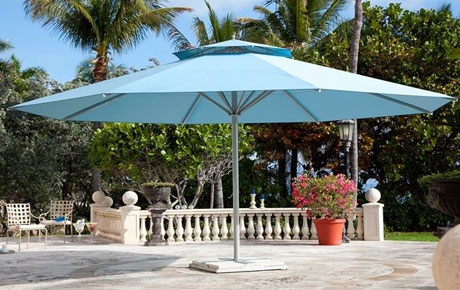
Choosing the right canopy material for your outdoor umbrella is crucial in ensuring its durability and maximum protection. Market and patio umbrellas offer a range of canopy material options that each come with specific advantages and limitations.
Polyester Fabrics:
One of the most common materials for outdoor umbrellas is polyester fabrics. These fabrics offer durability and are available in a range of colors to match any outdoor decor. While they are water-resistant, they are not completely waterproof, making them unsuitable for prolonged exposure to heavy rain.
UV-Resistant Fabric:
As the name suggests, UV-resistant fabrics are designed to provide protection against harmful UV rays. These fabrics use a special coating to prevent the sun’s rays from penetrating through the material. They are water-resistant and available in a range of colors, making them ideal for outdoor spaces with a lot of sun exposure.
Synthetic Materials:
Synthetic materials, such as vinyl or PVC, are an affordable option for outdoor umbrellas. They are waterproof and easy to clean, but they may not be as durable as some other materials. They are typically available in limited colors and may not offer as many design options as other materials.
Shade Sails:
Shade sails are a unique alternative to traditional market and patio umbrellas. They are made from a breathable fabric that allows air to circulate, making them ideal for windy conditions. Shade sails come in a variety of colors and can be easily customized to fit any outdoor space. However, they may not be the best option for areas with heavy rain or prolonged exposure to direct sunlight.
Canopy Fabrics:
Canopy fabrics are designed to provide additional protection from the sun’s rays. They are available in a range of colors and are often made from durable materials that can withstand wind and rain. However, they may not be as breathable as other materials, which can lead to heat buildup on hot days.
When choosing a canopy material, consider the weather conditions in your area and the specific needs of your outdoor space. For areas with a lot of sun exposure, UV-resistant fabrics are an excellent choice. In areas with heavy rain or wind, shade sails or canopy fabrics provide added protection. Ultimately, the right choice of canopy materials will help to protect your outdoor umbrella and enhance the overall aesthetic of your outdoor space.
Keywords: polyester fabrics, UV-resistant fabric, synthetic materials, shade sails, and canopy fabrics.
Pole Material Options
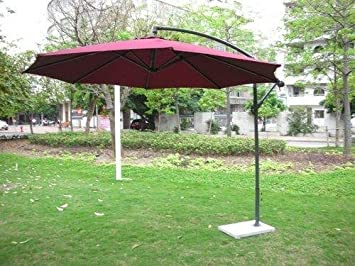
When choosing an outdoor umbrella, the type of pole material it uses is a crucial consideration. Market and patio umbrellas are usually made of aluminum or wooden poles, with some models even featuring fiberglass poles. Each material has its unique advantages and disadvantages, and your final decision will depend on your specific needs.
Aluminum Poles:
Aluminum poles are a popular choice for outdoor umbrellas because they are lightweight, rust-resistant, and relatively affordable. They are also highly durable and weather-resistant, making them an excellent option for areas with extreme weather conditions. Some models feature a powder coat finish, which enhances the aesthetic appeal of the umbrellas.
Wooden Poles:
Wooden poles offer a timeless aesthetic appeal to outdoor spaces, especially when used with patio dining tables. They are often used in traditional and classic outdoor settings. Wooden poles are naturally heavy and sturdy, making them resistant to strong winds and inclement weather. They tend to be more expensive than aluminum poles, though.
Fiberglass Poles:
Fiberglass poles are highly durable and weather-resistant, making them an excellent option for areas prone to extreme weather conditions. They are also relatively lightweight, making them easy to move around and set up. Fiberglass poles are often used in cantilever umbrellas and other models designed for larger spaces.
When deciding which material to choose, consider your outdoor space’s specific needs and aesthetic preferences. Wooden poles are ideal for classic and traditional outdoor spaces but may be costlier than aluminum poles. Aluminum poles offer a durable and affordable option but may not provide the same aesthetic appeal as wooden poles. Fiberglass poles are perfect for larger spaces, but they may come with a higher price tag.
In conclusion, all three pole materials–aluminum, wooden, and fiberglass–offer different advantages and disadvantages. Choose one that matches your outdoor space, budget, and weather conditions to ensure that you get the perfect umbrella for your needs.
Structural Differences between Market and Patio Umbrellas
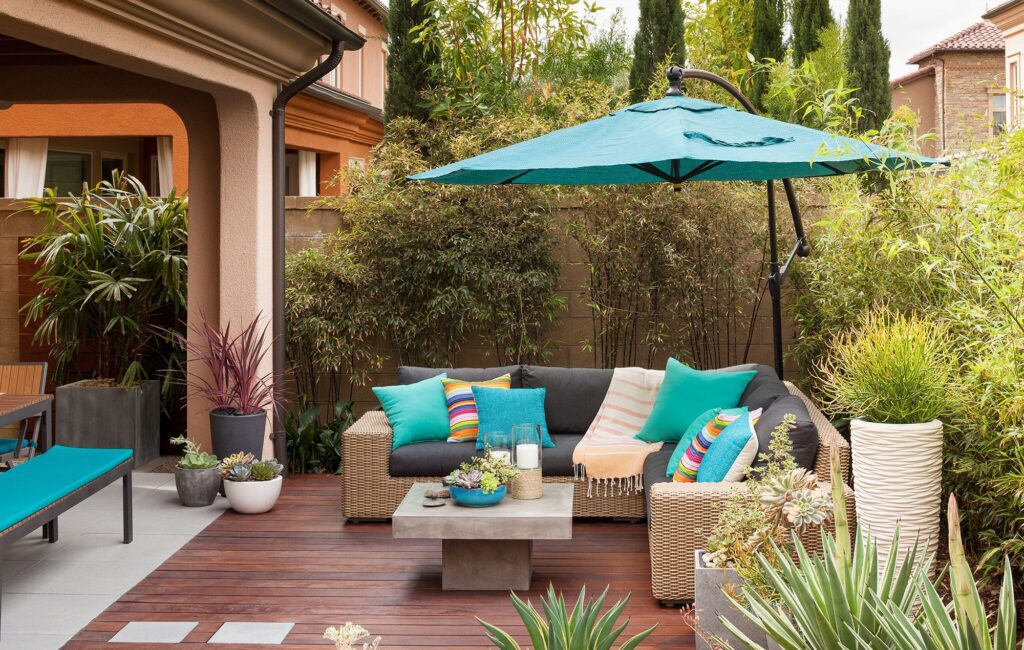
When it comes to outdoor umbrellas, there are a number of structural differences that set market umbrellas and patio umbrellas apart. Among these differences, two important features to consider are stability in windy conditions and the type of mechanism used to open and close the umbrella canopy. In this section, we will explore these two aspects in detail to help you decide which type of umbrella is best suited to your outdoor space.
Stability in Windy Conditions
One of the most common concerns with outdoor umbrellas is their ability to stand up to windy conditions. Market umbrellas and patio umbrellas have different designs that cater to this issue.
Market umbrellas are typically larger and have a more robust construction, making them a good option for high-wind areas. They often have thicker umbrella poles, which increase their stability and make them less likely to tip over. Additionally, market umbrella bases tend to be heavier and larger than their patio umbrella counterparts, further contributing to their wind-resistance.
On the other hand, patio umbrellas are often smaller and lighter, making them more suitable for areas with minimal wind. While they still have sturdy bases, they may not be as heavy or stable as those of market umbrellas.
When it comes to stability in windy conditions, the size and weight of the base are crucial factors. Generally, the heavier and larger the base, the sturdier the umbrella will be. The thickness of the umbrella poles also contributes to stability, as thicker poles provide more support and are less susceptible to bending or breaking in strong winds.
Another essential factor is the quality of the fabric. Opting for high-quality fabric that can withstand wind is crucial. Fabrics that are UV-resistant and can minimize the chance of the umbrella being blown away are excellent choices.
In summary, market umbrellas tend to be more suitable for high-wind areas because of their larger size and sturdier construction. Patio umbrellas are better for areas with minimal wind and are often smaller and lighter than market umbrellas. To ensure stability in windy conditions, choosing the right umbrella base size and weight, thicker umbrella poles, and high-quality, wind-resistant fabric are all essential factors to consider.
Crank Mechanism for Opening/Closing the Umbrella Canopy
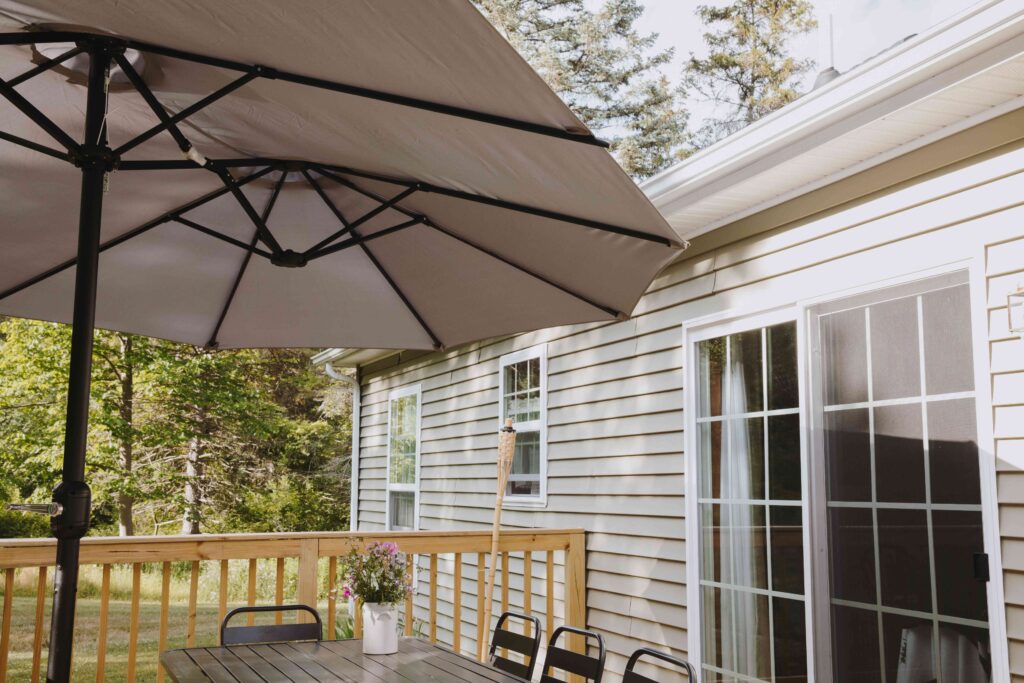
One of the most user-friendly features of modern outdoor umbrellas is the crank mechanism for opening and closing the umbrella canopy. This feature has become a standard for most market and patio umbrellas and is essential in making their use much more convenient.
The crank mechanism is typically located on the umbrella pole, making it easy for users to access it without reaching too far or getting up from their seat. To use the crank mechanism, the user needs only to turn the crank one way to open the umbrella and the other way to close it. This straightforward process is especially helpful for larger umbrellas, which can be more challenging to open and close manually.
For individuals who struggle with mobility issues or find it laborious to operate umbrellas manually, the crank mechanism feature is even more critical. It ensures that anyone can quickly and effortlessly open or close the umbrella canopy with minimal effort.
In summary, the crank mechanism is an essential feature to consider when choosing between a market and patio umbrella. This feature makes it easy for users to open and close their umbrella canopy with just a simple turn of the crank, making it a user-friendly choice for anyone, especially those with larger umbrellas.
Base Considerations for Both Types of Umbrellas
When choosing the perfect umbrella for your outdoor space, the base is an essential consideration. Both patio and market umbrellas require sturdy support to withstand windy conditions and ensure maximum shade coverage. As such, the type of base used is critical in keeping the umbrella secure and stable. In this section, we’ll explore the considerations to keep in mind when choosing the right base for your umbrella, including heavier bases for market and patio umbrellas and the different base designs for each type of umbrella.
Heavier Bases for Market/Patio Umbrellas
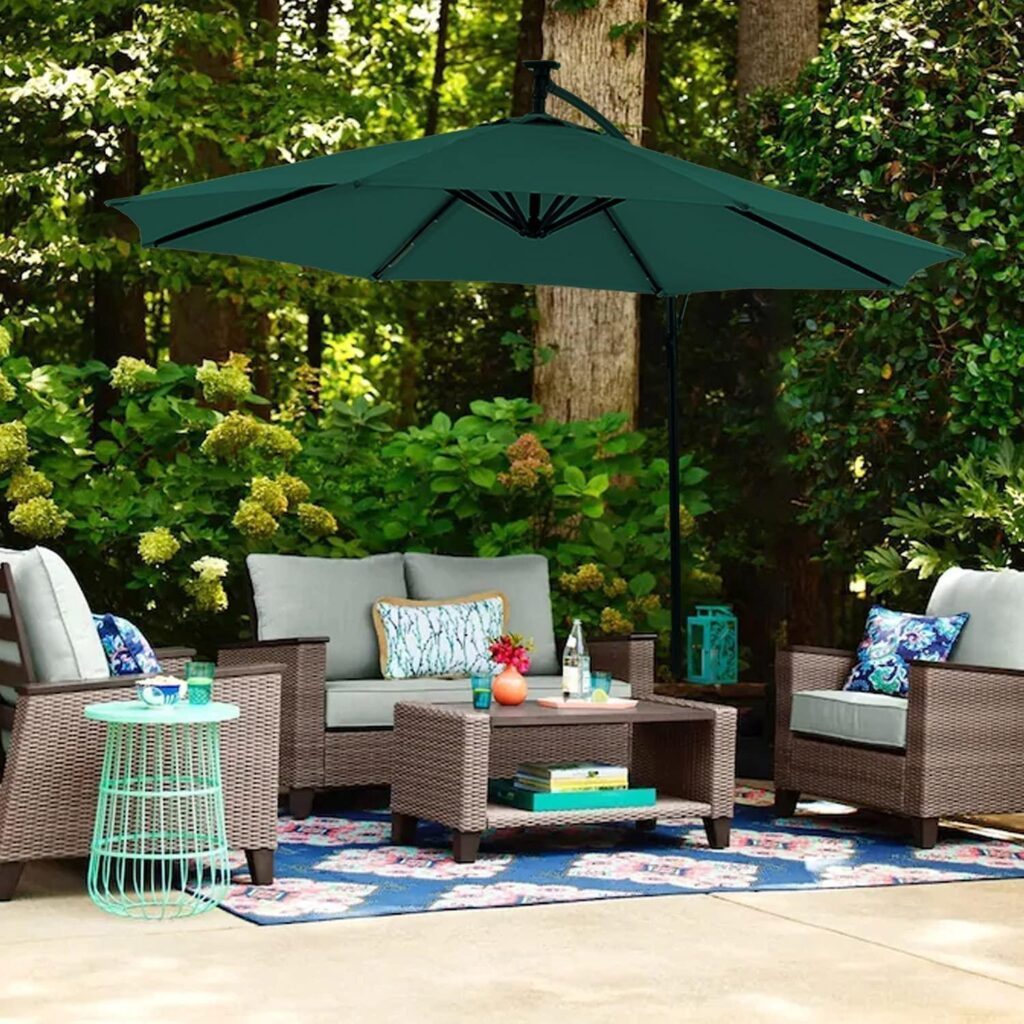
When it comes to outdoor umbrellas, stability and durability are paramount, particularly in areas with high winds. Heavier bases are a crucial component of both market and patio umbrellas, serving to anchor them firmly in place and prevent tipping over in gusty conditions.
Without a properly weighted base, an umbrella may be unstable and could potentially cause damage or even pose a safety hazard. For this reason, it’s essential to select the right base to ensure that your umbrella remains secure and stable, even on windy days.
When selecting a base for your market or patio umbrella, it’s important to consider the size and weight of the umbrella itself, as well as the wind conditions in your area. Generally, a heavier base will be better suited for larger umbrellas or for use in areas with higher wind speeds.
Beyond weight, some bases may include additional features such as wheels for easy transport or water weight bags to increase stability. These features can be particularly useful for frequent movers or in areas especially prone to high winds.
In summary, a weighted base is a must-have for both market and patio umbrellas. By selecting a base that’s appropriate for your umbrella size and local wind conditions, you can enjoy the shade and protection provided by your umbrella without worrying about its stability.
Different Base Designs for Each Type of Umbrella
When it comes to selecting a base design for your outdoor umbrella, it’s important to consider the type of umbrella you have and the conditions in which it will be used. For market umbrellas, a heavier base is typically necessary to ensure optimal stability and prevent tipping in windy conditions. These bases are often made from durable materials such as iron, steel, or concrete, and are designed to fit umbrella poles of 1.5 to 2 inches in diameter. Market umbrella bases may also feature convenient wheels for easy transport.
Patio umbrellas, on the other hand, may have a freestanding, smaller weighted base, allowing for more flexibility in placement and movement. These bases may be made from materials such as plastic, resin, or stone, and are typically designed to fit smaller umbrella poles.
In addition to these traditional base designs, there are also alternative options to consider. For example, umbrella base plates can be installed underneath outdoor dining tables to provide an additional level of stability and support. These base plates are typically made from heavy materials such as concrete and offer a discreet way to secure your umbrella without taking up valuable patio space.
Ultimately, selecting the right base design for your umbrella can make a big difference in its stability and longevity. By choosing a weighted base that suits your specific umbrella and conditions, you can enjoy maximum shade and protection while avoiding any safety concerns.
Uses for Different Types of Outdoor Space
When it comes to enjoying the outdoors, there are countless ways to make use of your outdoor space. Whether you have a patio, deck, or beach area, each space offers unique possibilities for relaxation and recreation. Below, we’ll explore some popular ways to make the most of these different types of outdoor spaces. From dining and entertaining to lounging and soaking up the sun, there’s something for everyone to enjoy in the great outdoors.
Usages for Patio and Deck Areas
When it comes to furnishing your patio or deck area, choosing the right type of umbrella is crucial for creating an enjoyable outdoor experience. Market and patio umbrellas are two popular types of outdoor umbrellas that you can select based on the size, layout, and usage of your space.
If you have a larger deck or outdoor dining area, a market umbrella can be the perfect choice for maximum shade coverage. They come in various sizes and can range from 6 to 13 feet in diameter, providing ample space for both seating and the table. You can also adjust the tilt feature of the market umbrella to block out the sun at different angles, providing the optimal amount of coverage throughout the day.
Market umbrellas are generally made with aluminum poles which are sturdy enough to withstand windy conditions. The canopy fabric is usually made of UV-resistant material to protect against the sun’s harmful rays, and heavier bases ensure that the umbrella stays put even in inclement weather.
If you have a smaller patio or seating area, a patio umbrella might be the better fit. Patio umbrellas are designed to be more compact in size and shape compared to market umbrellas. They usually range in size from 5 to 9 feet in diameter, making them perfect for smaller outdoor spaces or for placing next to a single outdoor chair.
Patio umbrellas provide sufficient shade for a seating area and are also lightweight and easy to move as needed. Patio umbrellas are often made of materials like wood or synthetic materials, and they come with a variety of canopy fabrics like polyester or weather-resistant synthetic that provide protection from harmful UV rays.
In summary, selecting the right type of umbrella, whether it’s a patio or market umbrella, is essential for creating a comfortable and enjoyable outdoor space. It’s important to take into consideration the size and layout of your patio or deck area as well as the usage of the space when choosing the appropriate umbrella type. Additionally, pole material, canopy fabric, and base weight are also crucial factors to consider when choosing an umbrella that will withstand inclement weather and provide ample shade coverage.
Usages For Beach Areas
Beach areas are a popular location for outdoor activities in which people enjoy swimming, sunbathing, or simply lounging next to the water. Since the sun’s rays can be intense at the beach, it is important to have adequate protection from the sun, and umbrellas are an excellent solution to provide shade and shelter from the elements.
When it comes to choosing umbrellas for beach areas, it is essential to consider the specific requirements of this environment. Beach umbrellas need to be designed with wind resistance and saltwater exposure in mind. For instance, synthetic materials can be a good option because they are resistant to corrosion by saltwater. UV-resistant fabrics are also a must-have feature for beach umbrellas because they protect against the harmful effects of the sun.
In addition to these features, beach umbrellas should also include a tilt feature that allows the canopy to be adjusted according to the sun’s position. This way, beachgoers can remain comfortable and shaded regardless of the angle of the sun.
The size of the umbrella canopy is another important consideration for beach umbrellas. A larger canopy will provide more shade, which is particularly valuable for larger groups or families who want to relax together without worrying about sunburn or heat-related discomfort.
Umbrella bases for beach areas should also be chosen carefully, since they need to be made of heavier materials that can withstand the strong winds and occasional gusts that can occur at the beach. Sandbags or metal bases are both good options, as they provide the necessary stability to keep the umbrella in place even in windy conditions.
Overall, beach areas require umbrellas that are designed to be resistant to both wind and saltwater exposure. Synthetic materials and UV-resistant fabric can provide the necessary protection, while a tilt feature ensures that beachgoers remain comfortable and shaded throughout the day. Finally, selecting a larger canopy and a heavier base will make sure that the umbrella withstands the natural elements of the beach environment.

